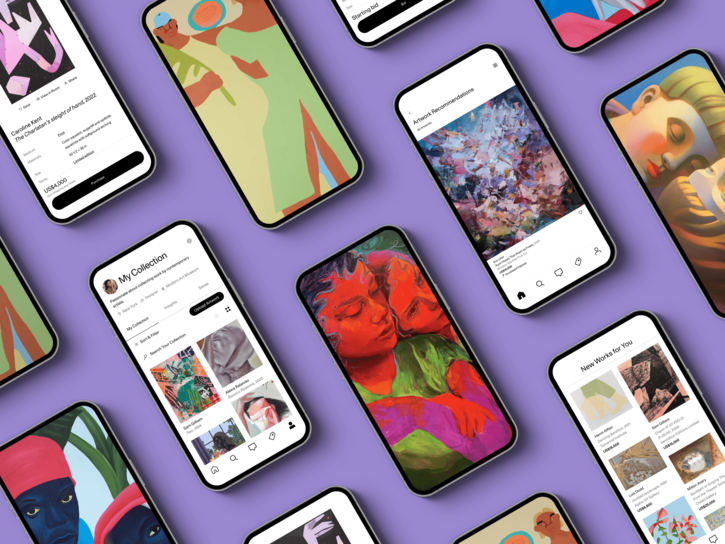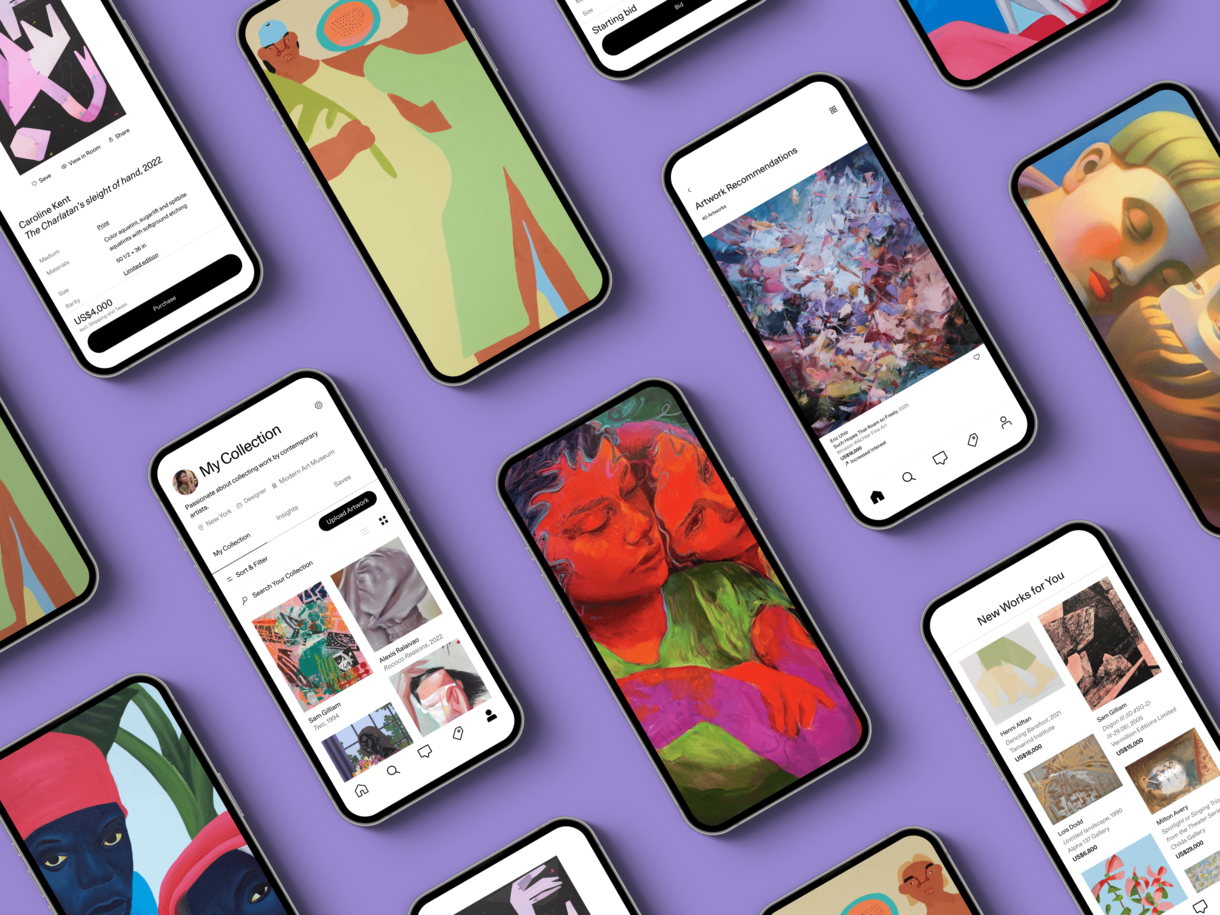From Avedon to Arbus, Artists Dissect the Complex Legacy of James Baldwin
Beauford Delaney, Dark Rapture (James Baldwin), 1941. Courtesy of Michael Rosenfeld Gallery LLC, New York, NY and David Zwirner.
History can be too kind to our cultural superstars. We mythologize artists, declaring their genius and forgetting their foibles. In recent years, American midcentury writer James Baldwin, perhaps best known for his 1963 book The Fire Next Time, has achieved such iconic status. His legacy was further cemented by the 2017 documentary I Am Not Your Negro, and he’s become an easy touchstone for anyone writing about African-American literature.
The New Yorker writer and veritable Renaissance man Hilton Als is trying to save Baldwin from such a fate. “I wanted to rescue him from being a prophet, from being bloodless,” he recently told Artsy. “A lot of people deify him and he becomes a figure you can’t argue with. I wanted him to be in dialogue with artists.” To that end, Als has organized a group show at David Zwirner entitled “God Made My Face: A Collective Portrait of James Baldwin,” on view through February 16th. Artworks spanning the early 20th century through 2018, by talents ranging from Alice Neel and Glenn Ligon to Njideka Akunyili Crosby and James Welling, offer a more complex understanding of Baldwin’s multifaceted biography.
Baldwin, who died in 1987, also wrote such classics as Go Tell it on the Mountain (1953), Notes of a Native Son (1955), and If Beale Street Could Talk (recently made into a film by Moonlight director Barry Jenkins). He produced one of American literature’s most unadorned depictions of the artist’s life in the 1957 short story “Sonny’s Blues.”
Njideka Akunyili Crosby, Nyado: The Thing Around Her Neck, 2011. © Njideka Akunyili Crosby. Courtesy of the artists, Victoria Miro, London/Venice, and David Zwirner.
Marlene Dumas, James Baldwin, 2014, from the series “Great Men,” 2014–present. © Marlene Dumas. Courtesy of David Zwirner.
Als’s exhibition aims to demystify Baldwin himself. In the show, the curator highlights what he believes are two overlooked aspects of Baldwin’s life and oeuvre: his queerness and his desire to become a filmmaker. Many of the included artworks address these themes, more or less obliquely. Als conceives of the project as an “essay” on Baldwin, with every included artist contributing a “sentence or paragraph.” He’s assembled a disparate group of works that together offer a loose narrative, with plenty of room for viewers to insert their own interpretations. It’s an illuminating show, and a curatorial feat.
In one gallery, viewers encounter 14 brushy mixed-media portraits of queer men from South African artist Marlene Dumas’s ongoing “Great Men” series, begun in 2014. Dumas initiated the works in response to Russia’s anti-homosexuality legislation (in 2013, the country criminalized the promotion of gay rights, and bigoted violence ensued). At Zwirner, Dumas’s portraits of Baldwin and Als appear alongside those of Jean Genet, Tennessee Williams, Richard Wright, and other great 20th- and 21st-century thinkers (including Marlon Brando, who Quincy Jones recently claimed was Baldwin’s lover). Under each head, the artist pens capsule descriptions of these impressive personalities. Their sexuality, while a uniting feature, becomes far less interesting than their wide-ranging achievements.
As for his cinematic interests, Baldwin was a particular fan of Ingmar Bergman. In 1960, he even penned an essay for Esquire on the iconic Swedish director of classics like The Seventh Seal and Persona. Interestingly, Baldwin himself addressed the artistic cult of personality in the piece: “He is neither as great nor as limited as the current hue and cry suggests,” he wrote. “But he is one of the very few genuine artists now working in films.” If Baldwin was never able to realize his own Hollywood dreams, Als believes that Kara Walker’s 8 Possible Beginnings or: The Creation of African-America, A Moving Picture (2005), on view at Zwirner, resembles the kind of movie that Baldwin would have made. In the black-and-white film, shadowy figures enact a violent, highly sexualized rendition of the slave narrative. Walker and her daughter speak in the background, lending a sense of autobiography and vulnerability to the work.
Als also includes the film An Ecstatic Experience (2015) by Ja’Tovia Gary, which juxtaposes footage of protest (Black Lives Matter actions), testimony (Ruby Dee narrating a plantation tale), and prayer (church services). Gary offers a simultaneously violent and celebratory portrait of her experience as an African-American woman and artist living in the United States today. Gary recently wrote Artsy about Baldwin’s influence on her. “‘Sonny’s Blues’ was my first real taste,” she said. “Baldwin’s rhythmic language and the very palpable sound vibrating from his text shook me to my core.” In particular, she admirex “the courage and clarifying vision” he used in mining his personal life for inspiration.
For the most part, Als relies on viewers to make their own connections between Baldwin and the artworks. A photograph by Diane Arbus (A Young Negro Boy, Washington Square Park, N.Y.C. 1965, 1965) hangs next to one by Anthony Barboza (Michael Jackson at 21, 1980), for example, suggesting alternative presentations of black masculinity. “What is a real face?” Als asked at the exhibition preview last week. He noted that Arbus had captured a young man’s “self-invention in process—his pencilled-in eyebrows, his parted and patted-down hair.” Between the two, the curator asked, “who is more real or more fake?”—Jackson, with his afro, or “Arbus’s figure with his shifting between maleness and femaleness?” He suggested that the answer lay in between. Viewers are left to draw conclusions about Baldwin’s own self-presentation, and the way he wrote about women and men in his own work.
Richard Avedon, James Baldwin, writer, Harlem, New York, 1945. © The Richard Avedon Foundation. Courtesy of David Zwirner.
A few artworks, however, do tie more directly to Baldwin’s life. The writer became friends with Richard Avedon during high school in the Bronx. Years later, in 1964, the pair collaborated on a photo book entitled Nothing Personal. Als included black-and-white photographs of Baldwin, taken by his friend. Three works by Beauford Delaney, who Baldwin proclaimed was his “spiritual father,” are also on view. One painting, Dark Rapture (James Baldwin) (1941), depicts the writer’s dark nude body against an exuberantly hued landscape. Baldwin would be unrecognizable if not for the title; sitting on a ledge with one leg crossed over the other, he looks like a mythical figure, fully embodied.
Of course, a single exhibition isn’t enough to understand any artist, let alone such a towering figure as James Baldwin. There’s no substitute for reading Baldwin’s work. If the man himself wasn’t a prophet, his work manages to be both magical and deeply human. As Gary wrote to Artsy, “I too know what it’s like to grow up under the heavy cloak of the holy spirit, to have to wrestle with saints in order to come to terms with the self. How the very personal and specific can at once be all encompassing and expansive is Baldwin’s foremost lesson to me.”
In “Sonny’s Blues,” Baldwin suggests that to truly understand an artist, you must fully engage with that person’s oeuvre. At the end of the story, the narrator finally goes to a club to listen to his brother play. “What is evoked in [the musician], then, is of another order, more terrible because it has no words, and triumphant, too, for that same reason. And his triumph, when he triumphs, is ours,” he tells us. “He could help us to be free if we would listen.”





